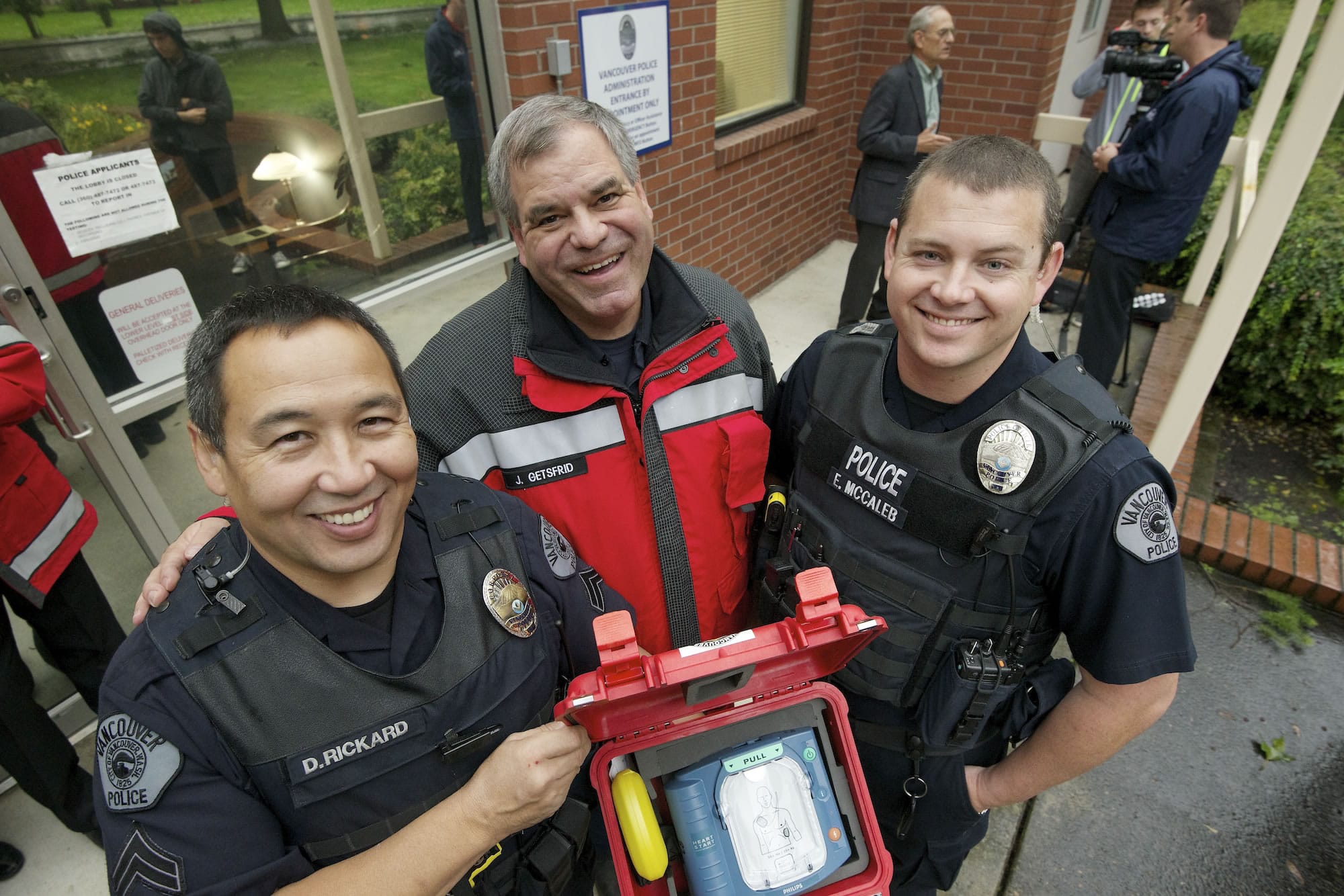The grant money comes from contract fines Clark County EMS District No. 2 assesses against its ambulance contractor, American Medical Response. The contract fines, fees and clinical upgrade reserve have funded projects over the years to enhance first response and public safety:
1997: $151,000 to purchase 800 MHz radios for fire agencies.
1998: $223,000 to purchase 12 Lead EKGs for fire agencies.
2004: $203,000 to fund mobile computing devices for fire agencies.
2005: $56,000 for 50 AEDs distributed to the Clark County Sheriff’s Office and small cities to enhance early access to defibrillation in rural areas.
2008: $22,000 for 20 AED’s to the Clark County Sheriff’s Office.
2009: $45,000 to purchase a simulation training manikin for use by county EMS providers.
2010: $2,000 for hypothermia resuscitation equipment for all county 911 ambulance providers.
Knowing where someone’s heart will stop is like predicting lightning, but when sudden cardiac arrest strikes, every second is crucial.
To make those seconds count, 60 Vancouver police patrol vehicles have been equipped with automated external defibrillators, portable life-saving devices that shock the heart. In addition, 19 Vancouver Fire Department administrative staff vehicles were also stocked. The $1,200 devices were purchased with an $87,000 grant from American Medical Response through the Clark County EMS Council.




